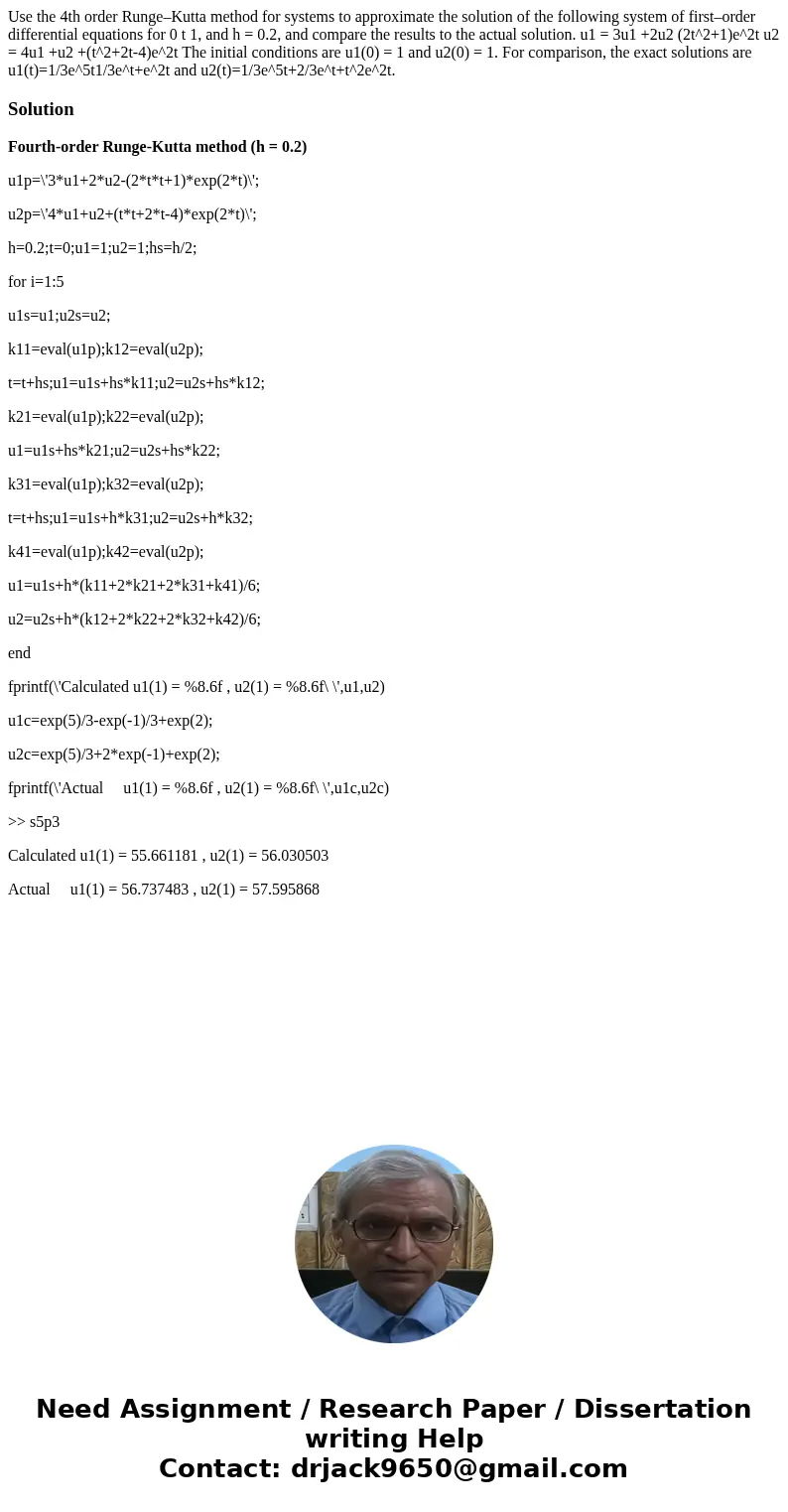Use the 4th order RungeKutta method for systems to approxima
Use the 4th order Runge–Kutta method for systems to approximate the solution of the following system of first–order differential equations for 0 t 1, and h = 0.2, and compare the results to the actual solution. u1 = 3u1 +2u2 (2t^2+1)e^2t u2 = 4u1 +u2 +(t^2+2t-4)e^2t The initial conditions are u1(0) = 1 and u2(0) = 1. For comparison, the exact solutions are u1(t)=1/3e^5t1/3e^t+e^2t and u2(t)=1/3e^5t+2/3e^t+t^2e^2t.
Solution
Fourth-order Runge-Kutta method (h = 0.2)
u1p=\'3*u1+2*u2-(2*t*t+1)*exp(2*t)\';
u2p=\'4*u1+u2+(t*t+2*t-4)*exp(2*t)\';
h=0.2;t=0;u1=1;u2=1;hs=h/2;
for i=1:5
u1s=u1;u2s=u2;
k11=eval(u1p);k12=eval(u2p);
t=t+hs;u1=u1s+hs*k11;u2=u2s+hs*k12;
k21=eval(u1p);k22=eval(u2p);
u1=u1s+hs*k21;u2=u2s+hs*k22;
k31=eval(u1p);k32=eval(u2p);
t=t+hs;u1=u1s+h*k31;u2=u2s+h*k32;
k41=eval(u1p);k42=eval(u2p);
u1=u1s+h*(k11+2*k21+2*k31+k41)/6;
u2=u2s+h*(k12+2*k22+2*k32+k42)/6;
end
fprintf(\'Calculated u1(1) = %8.6f , u2(1) = %8.6f\ \',u1,u2)
u1c=exp(5)/3-exp(-1)/3+exp(2);
u2c=exp(5)/3+2*exp(-1)+exp(2);
fprintf(\'Actual u1(1) = %8.6f , u2(1) = %8.6f\ \',u1c,u2c)
>> s5p3
Calculated u1(1) = 55.661181 , u2(1) = 56.030503
Actual u1(1) = 56.737483 , u2(1) = 57.595868

 Homework Sourse
Homework Sourse